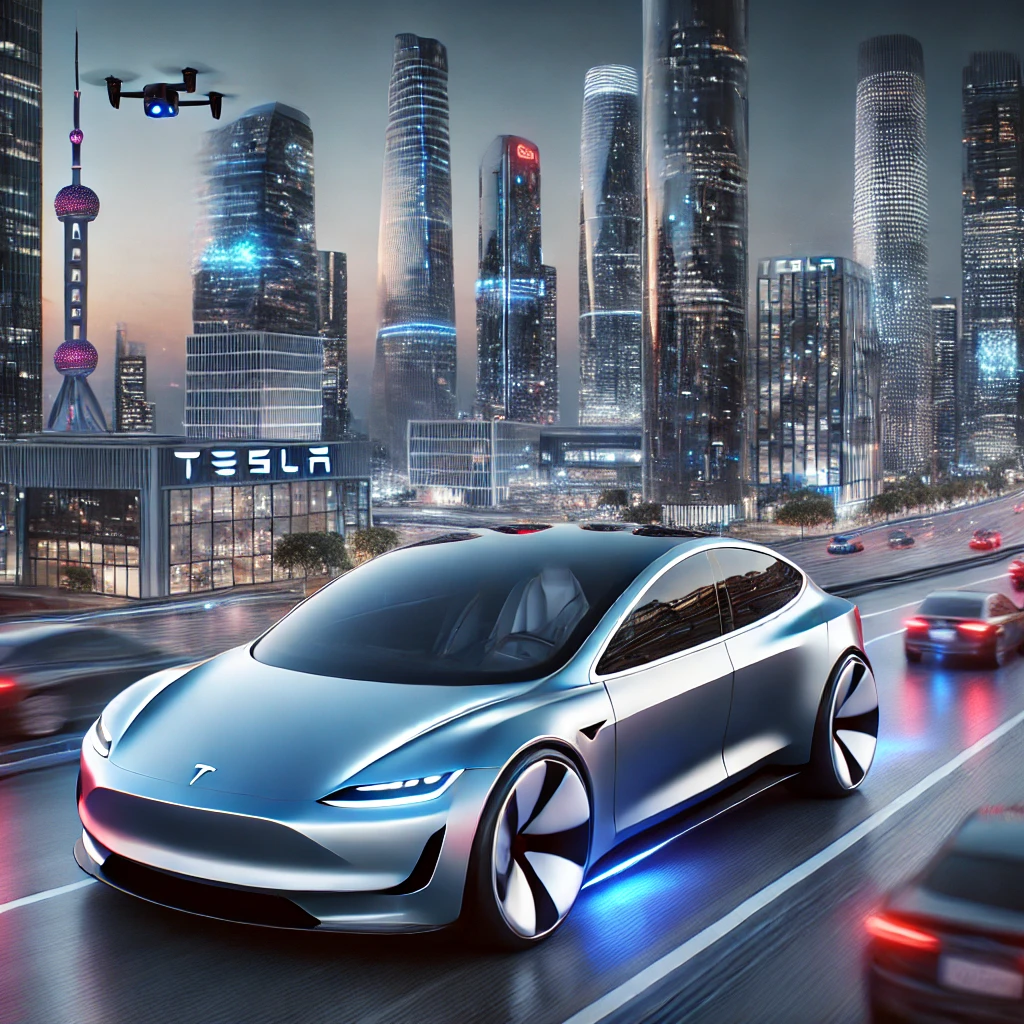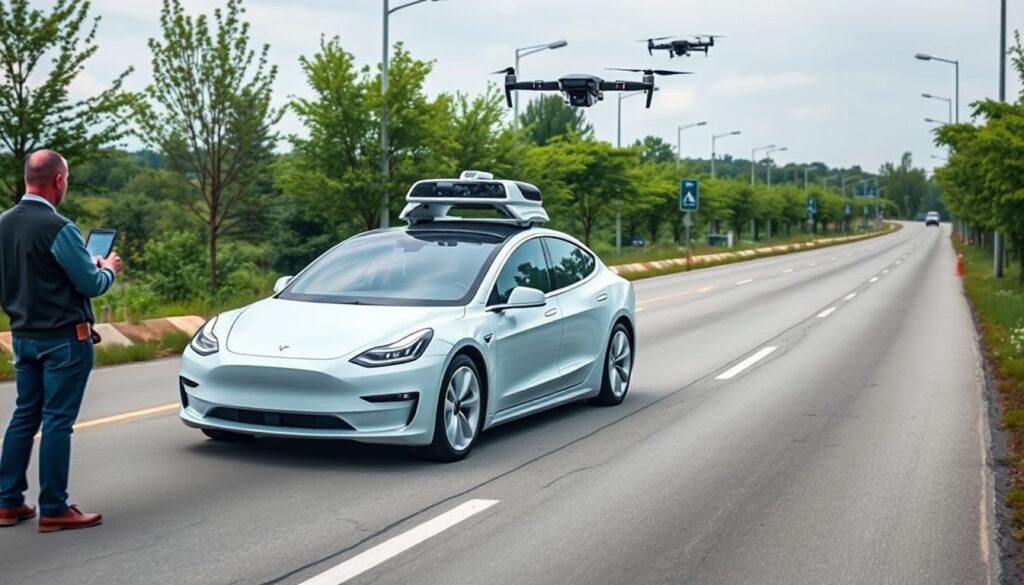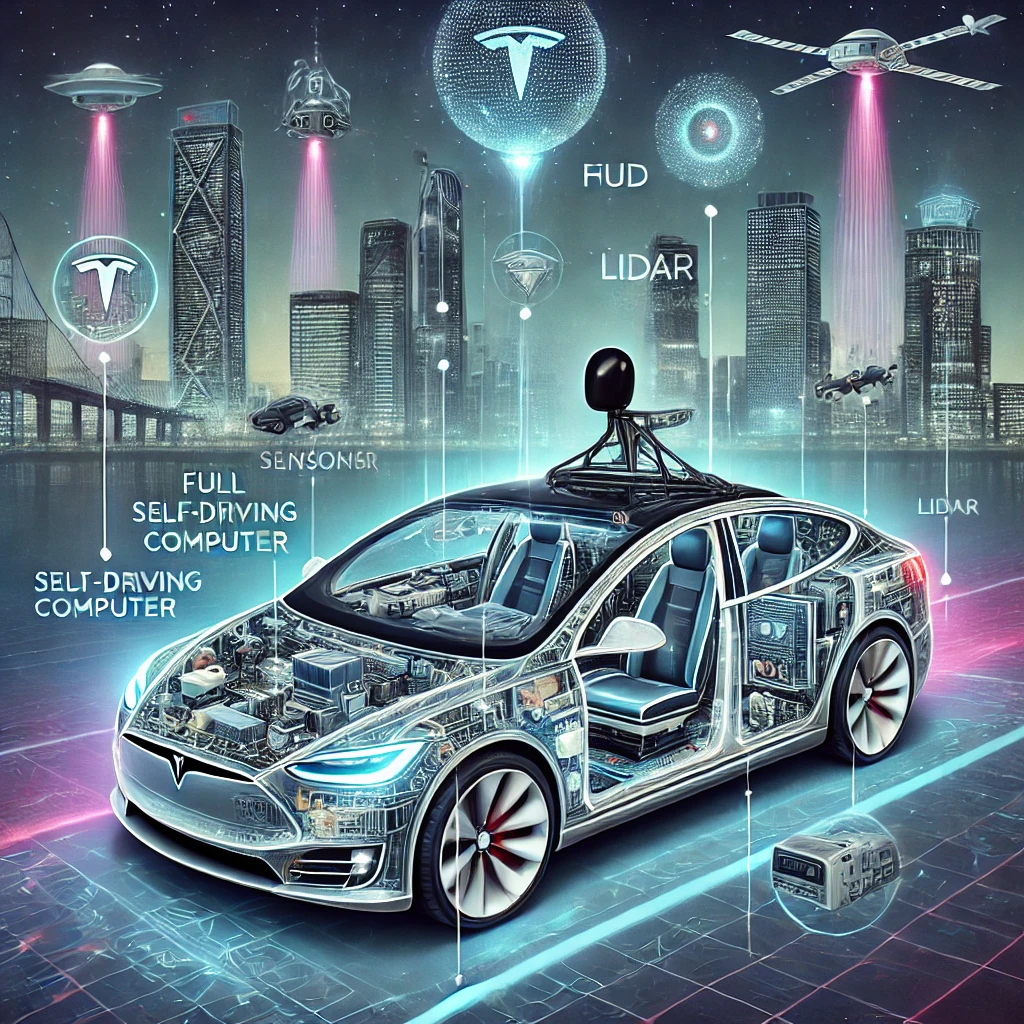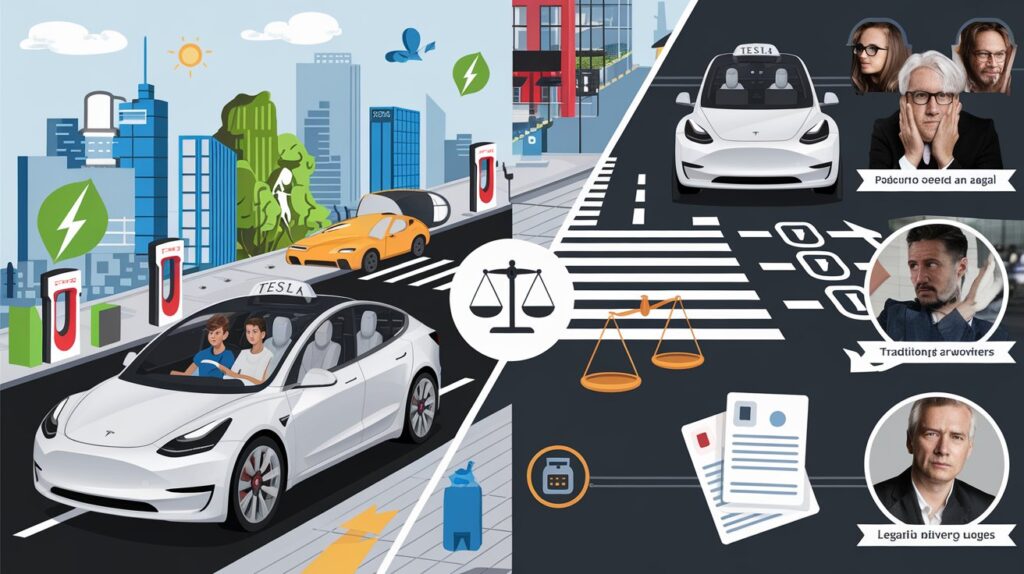Tesla’s Robotaxi: A Bold Vision for the Future of Transportation
In a highly anticipated reveal at Tesla’s “We, Robot” event, held at the Warner Bros. film lot in Burbank, California, Elon Musk showcased the prototype of Tesla’s Robotaxi—a fully autonomous vehicle designed to revolutionize urban mobility. The demonstration took place on non-public roads that Tesla had been mapping in advance, although Musk pointed out that Tesla’s Full Self-Driving (FSD) system does not rely on high-definition maps, setting it apart from other companies’ approaches to autonomous driving.

This unveiling underscores Musk’s ambition to shift Tesla away from its core business of manufacturing electric vehicles (EVs) toward becoming a leader in artificial intelligence and robotics. With a market cap approaching the combined value of all major automakers worldwide, Tesla’s success largely rests on Musk’s bold promises of breakthrough innovations. His vision of fully autonomous driving—a technology that could transform urban landscapes and redefine human mobility—remains at the heart of Tesla’s long-term strategy. However, delivering on these promises is far from straightforward.
Autonomous Future: Utopia or Dystopia?
Musk’s ultimate goal is to create a world where humans are freed from the task of driving altogether, leaving cars to handle the complexities of the road. This idealistic vision comes with a host of potential benefits: fewer accidents caused by human error, reduced traffic congestion, and cheaper, cleaner transportation options. If successful, Robotaxis could reduce the need for private car ownership in cities, easing the environmental burden of millions of vehicles on the road.
Yet, achieving this utopia is fraught with challenges. The technology must reach a point of reliability where it is trusted by regulators and the public. Further, society must adapt to a new paradigm where machines take over activities that have been deeply ingrained in human culture. Driving, for many, is more than just a means of transportation—it’s a symbol of independence, freedom, and control. Handing that responsibility over to an AI represents a cultural shift as much as it does a technological one.
Musk’s confidence in Tesla’s ability to meet these challenges reflects his belief in the inevitability of technological progress. But the human dimension remains a key consideration. How quickly can we adapt? How much risk are we willing to accept in exchange for innovation? And how do we ensure that the benefits of this technology are equitably distributed?
1. What is Tesla’s Robotaxi?
Tesla’s Robotaxi is a concept where fully autonomous Tesla vehicles would be used to offer ride-hailing services without the need for a human driver. Essentially, a fleet of Tesla cars, equipped with advanced Full Self-Driving (FSD) technology, would pick up passengers and transport them to their destinations. The Robotaxi service leverages Tesla’s EVs and advanced autonomous driving capabilities to provide a seamless transportation experience.

Tesla plans to allow Tesla owners to add their cars to the Robotaxi fleet when not in use, essentially transforming privately owned vehicles into income-generating assets. The idea is that Tesla owners could earn passive income by allowing their cars to autonomously drive others while they aren’t using them, similar to how homeowners rent out rooms on platforms like Airbnb.
2. The Technology Behind Robotaxi
Tesla’s Robotaxi relies on several key technologies, many of which are still being refined and developed:

- Full Self-Driving (FSD): At the heart of the Robotaxi is Tesla’s Full Self-Driving software. This system uses cameras, sensors, and artificial intelligence to enable a Tesla vehicle to navigate roads, avoid obstacles, and make decisions in real-time. FSD has evolved from basic autopilot functions like lane-keeping and adaptive cruise control to more complex maneuvers like making turns, navigating intersections, and handling roundabouts. Once the FSD achieves full autonomy (Level 5, meaning no human intervention is required), Tesla vehicles would be able to operate entirely without a driver.
- Neural Networks and AI: Tesla’s approach to self-driving heavily relies on neural networks and machine learning. The company has amassed billions of miles of driving data from Tesla vehicles worldwide, continuously improving the FSD software by learning from real-world scenarios. Tesla’s AI system can recognize objects, traffic signs, and predict the behavior of other road users, enhancing the safety and reliability of its autonomous driving.
- Tesla Vision: In 2021, Tesla announced it was moving away from using radar sensors and would focus solely on camera-based vision for its self-driving technology. Tesla Vision uses eight cameras around the vehicle to capture a 360-degree view of the surroundings, while neural networks process this visual data to interpret the environment and make driving decisions.
- Autonomous Hardware: Tesla’s vehicles come equipped with hardware designed for full autonomy, including the FSD computer, which is capable of handling the immense computational workload required for self-driving tasks. Tesla’s cars also feature over-the-air updates, meaning that software improvements can be deployed remotely to all vehicles, ensuring that the fleet is always operating with the latest technology.
3. How Tesla’s Robotaxi Work?
Tesla envisions the Robotaxi service functioning similarly to current ride-hailing apps like Uber and Lyft. Here’s how it might work:
- Request a Ride: Users would request a ride using the Tesla app. Instead of a human driver, a nearby autonomous Tesla vehicle would respond to the request and arrive at the user’s location.
- Pickup and Ride: Once the vehicle arrives, the user can get in, and the car will drive them to their destination autonomously. Tesla’s FSD software would handle all aspects of the driving experience.
- Drop-off: After the ride, the Tesla Robotaxi would proceed to pick up the next passenger or return to its owner if needed. The app would handle payments and scheduling without human involvement.

Tesla has stated that its Robotaxi service would offer significantly lower ride costs compared to traditional ride-hailing services. With no driver salaries and the lower operating costs of electric vehicles, Tesla could offer rides at a fraction of the current price. In fact, Elon Musk has claimed that the cost per mile could be as low as $0.18, making it highly competitive and accessible to a wider audience.
4. Potential Impact on the Transportation Industry
If Tesla’s Robotaxi becomes a reality, it could have profound effects on urban transportation, the automotive industry, and society as a whole.
- Reduced Traffic Congestion: By optimizing routes and using a shared fleet of autonomous vehicles, Robotaxi could reduce the number of cars on the road. Since these vehicles would be driving more efficiently, avoiding unnecessary stops and starts, traffic congestion could decrease, leading to smoother urban mobility.
- Lower Cost of Transportation: Tesla’s Robotaxi service would likely be much cheaper than traditional ride-hailing services. By eliminating the cost of human drivers and lowering operating expenses with electric cars, Tesla could pass these savings on to consumers. This could also make personal car ownership less necessary for city dwellers, as affordable and convenient Robotaxis would meet most of their transportation needs.
- Environmental Benefits: Since Tesla’s Robotaxis are electric vehicles, they would produce zero emissions, contributing to cleaner air and a reduction in greenhouse gases. As cities push towards greener alternatives, this could align with broader goals to reduce the environmental impact of transportation.
- Job Displacement for Drivers: While Robotaxis present numerous benefits, one potential downside is the impact on employment for taxi, Uber, and Lyft drivers. As more ride-hailing services become autonomous, there could be significant job displacement, leading to concerns about how to address this shift in the labor market.
- Car Ownership Model Shifts: Tesla’s Robotaxi concept challenges traditional car ownership models. With the ability to earn money by adding their vehicles to the Robotaxi fleet, Tesla owners could offset the cost of their cars. Over time, people may rely less on personal vehicles and more on autonomous ride-sharing, leading to a potential reduction in the overall number of cars manufactured and sold.
5. Challenges and Hurdles
While the vision of Tesla’s Robotaxi is exciting, there are still several challenges to overcome before it becomes a widespread reality:

- Regulatory Approvals: Autonomous driving technology is subject to stringent regulations, varying by country and even by state. Tesla will need to gain approval from numerous regulatory bodies before launching Robotaxis in different regions. This could take time, as governments are often cautious when it comes to fully autonomous vehicles.
- Technological Maturity: While Tesla’s FSD technology has made significant advancements, it is not yet at the stage of Level 5 autonomy, where no human intervention is required. Achieving this level of reliability will be crucial for the widespread adoption of Robotaxi services.
- Public Trust: For the Robotaxi service to succeed, the public will need to trust the safety and reliability of fully autonomous vehicles. Many people are still skeptical of self-driving technology, and high-profile accidents involving autonomous cars have raised concerns about their readiness for widespread deployment.
6. The Road Ahead
Tesla’s Robotaxi is a bold vision that could redefine urban mobility and the future of transportation. With Elon Musk’s ambitious timeline, Tesla hopes to launch the service soon, but the exact date remains uncertain as regulatory and technological hurdles still need to be addressed.
Nevertheless, the Robotaxi concept aligns with Tesla’s broader goals of accelerating the transition to sustainable energy and creating a future where autonomous electric vehicles dominate the roads. If successful, Tesla’s Robotaxi could lead to more efficient cities, greener transportation, and an overall shift in how people think about mobility.
In the coming years, it will be fascinating to watch how this vision unfolds and whether Tesla can truly revolutionize the ride-hailing industry with its fleet of autonomous Robotaxis.